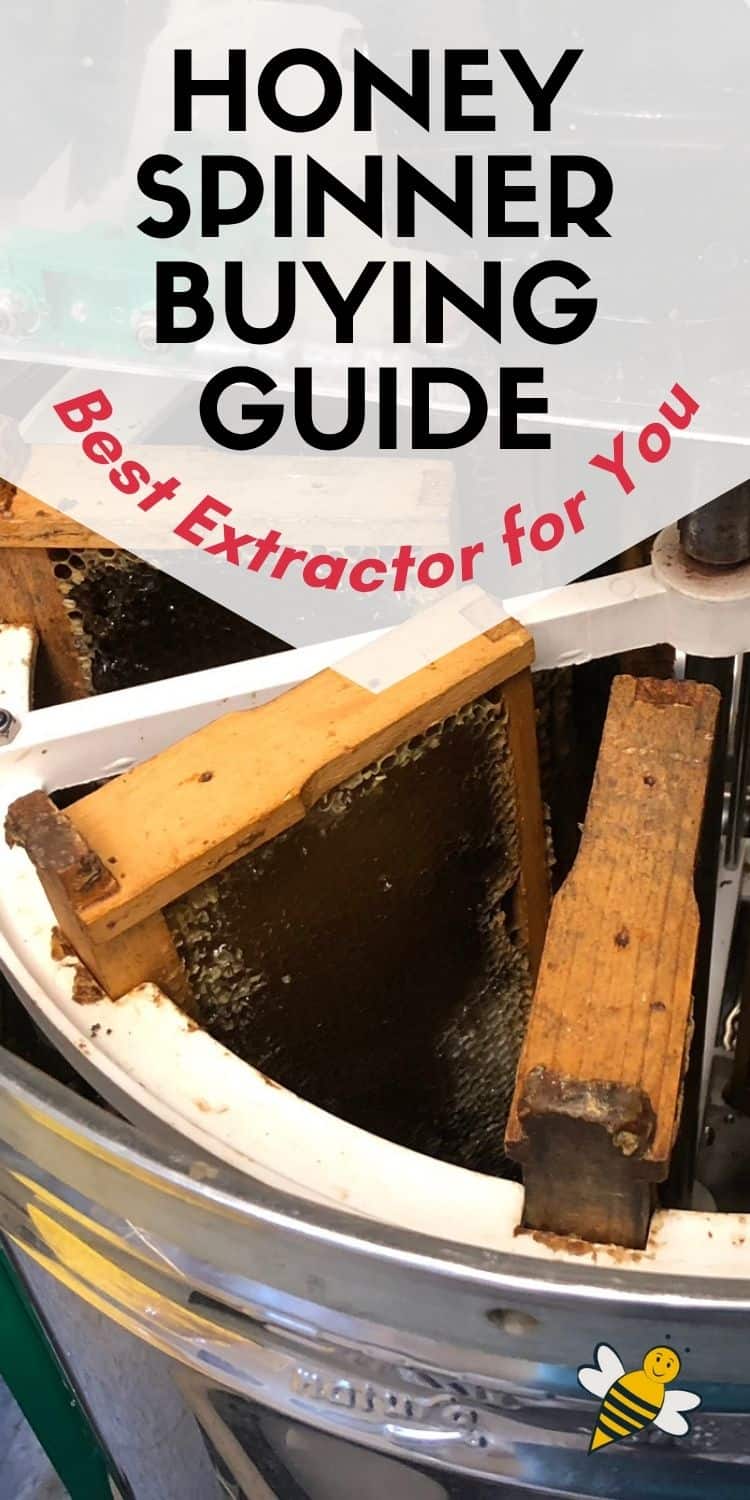Why Choosing the Right Honey Extractor Matters
Extracting honey is one of the most rewarding experiences of beekeeping. But, without the proper equipment it can a be a sticky, wasteful mess. A good honey extractor (also called a honey spinner or honey centrifuge) helps you remove honey from the comb efficiently, preserving the wax and keeping your harvest clean. Here, you will learn which features are most important when choosing a honey extractor for your bees.

After managing several colonies for many years, it is still very rewarding to collect a great honey crop. But, taking the honey off the hive is just the beginning. Now you need to learn how to extract honey from the comb and get the most out of your harvest. But which unit to buy?
This post may contain affiliate links. As an Amazon Associate, I earn from qualifying purchases. Please read my disclosure.
Types of Honey Extractors
Not all honey extractors are equal. This means you have a few decisions to make when considering which honey extractor to buy.
Let’s face it – the cost of beekeeping can be depressing – this may represent a major purchase – but one that will last for year.
- manual vs electric
- tangential or radial
- size (# of frames)
Manual vs Electric
When choosing between manual and electric honey extractors – the major factor is cost. Manual extractors have a large hand crank that is used to turn the inner workings of the spinner. The nicer models have gears that help accelerate the spin.
I began beekeeping with a manual honey extractor that was capable of being converted to electric. I planned to use it manually for a few seasons and then purchase the motor attachment.
I only had about 6 supers of honey to extract that year. But after that first season, I ordered a motor and have never looked back.
However, if your beekeeping budget allows – opt for a model with an electric motor. A motorized honey extractor costs more but the savings in time and “elbow grease” make it worthwhile in many cases.
Both types of honey extractors can do a very good job of helping you process your honey harvest. If you have a lot of helpers – you may save money with the manual unit.

Tangential vs Radial
Tangential extractors spin honey out of one side of the frame at a time. This means is takes longer to extract a run of 9 frames because you have to flip the frame and repeat the spinning process for side two.
Radial extractors are able to sling the liquid out of both sides of the frame at the same time. No stopping to turn and spin again. This means you can extract in half the time.
Sometimes, tangential extractors are a bit less expensive – but not always. Be sure to read the details carefully before you purchase.

2 Frame, 4 Frame and Larger
Size and cost go hand in hand when choosing a honey extractor. Frame load refers to how many frames the extractor can spin in one batch.
A small unit works as well as larger model – it just takes more time. For a hobbyist with 1-2 hives, a small unit works just fine.
But, if you have more than 2-3 hives – you may find yourself wishing you purchased the larger unit. I’m very happy with my 9 frame radial.
Factors to Consider When Choosing a Honey Extractor
- frame capacity
- power source and speed
- construction material – durability
- ease of cleaning
- price
In general, beekeepers choose an extractor based on the number of hives in their apiary. A small 4-frame honey spinner is fine for a backyard beekeeper with a few hives. If you have more than 3 hives, you might want a larger machine.
If you have very little to spend and a lot of free time – save your money and go with the manual unit. If spare time is something you dream of – a powered extractor gets the job done faster.
Most quality extractors are stainless steel and they cost more than those made of plastic. This of course makes them more durable on average.
You will need to clean your honey extractor after every use. Some units are easier to clean than others.
Price is a major factor. If you don’t have the extra money to spend on a dedicated honey house or a large expensive machine – don’t. You can always add an extractor (or a larger one) to your apiary next year.
DIY Honey Extractors
You will find instructions online for building your own honey spinner. These can be very efficient but I have seen some dangerous models too.
If you choose this route, be sure to use food grade parts for any area that comes in contact with the honey.

VIVO Electric Honey Extractor 8 Frame Rack VEVOR 3 Frame Honey Extractor
VEVOR 3 Frame Honey Extractor
FAQs
Yes, frames must be uncapped before they are placed in the honey extractor. Large commercial beekeepers often have combination units that do both – backyard beekeepers do not.
The honey extractor will not damage your wax comb as long as it is properly installed and you only use as much speed as needed to get the job done.
No. While most honey extractors allow for using deeps frames, some models do not.
Yes, honey can be extracted from plastic frames by using slow to moderate speeds.
A Final Word
A honey extractor is a valuable piece of beekeeping equipment that holds its value well. If you decide after a few years that beekeeping is not your thing, you can sell your extractor. You should have no problems selling a well-cared for machine.
If you are uncertain about whether or not you really need a honey extractor, ask around at local beekeeping clubs. You may find a beekeeping friend to share with.



